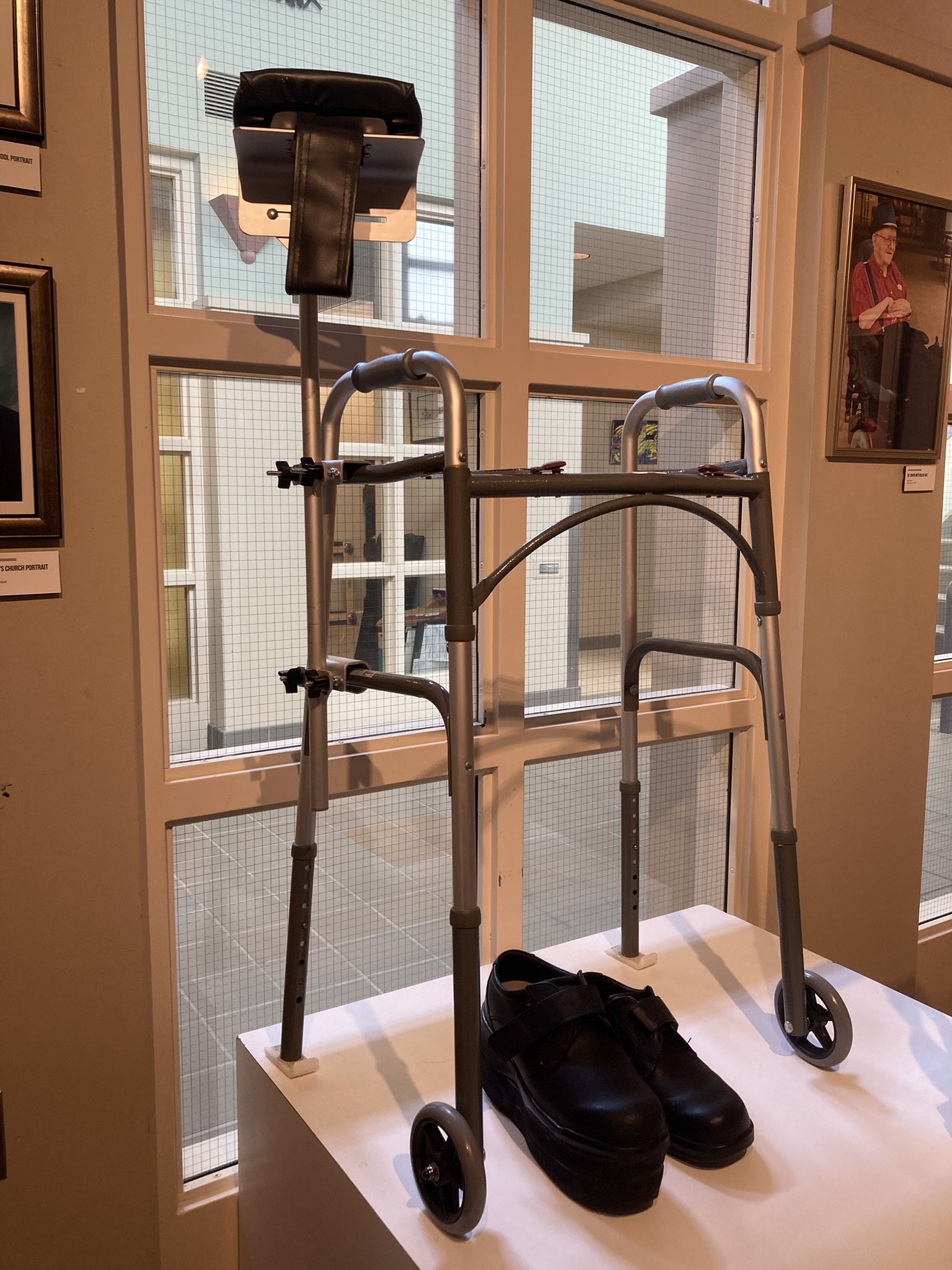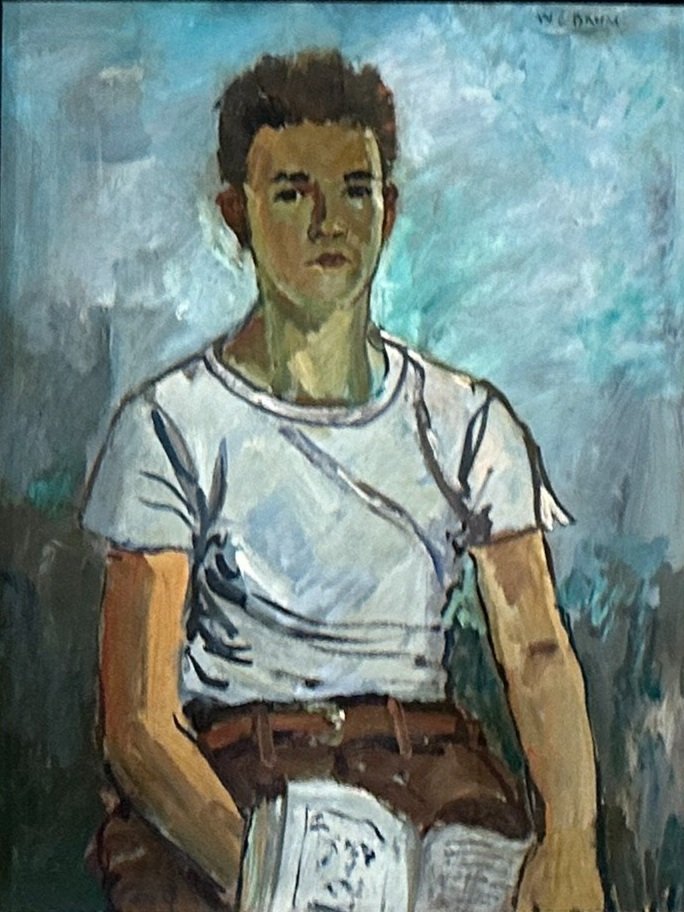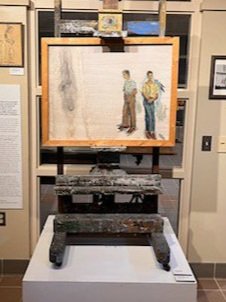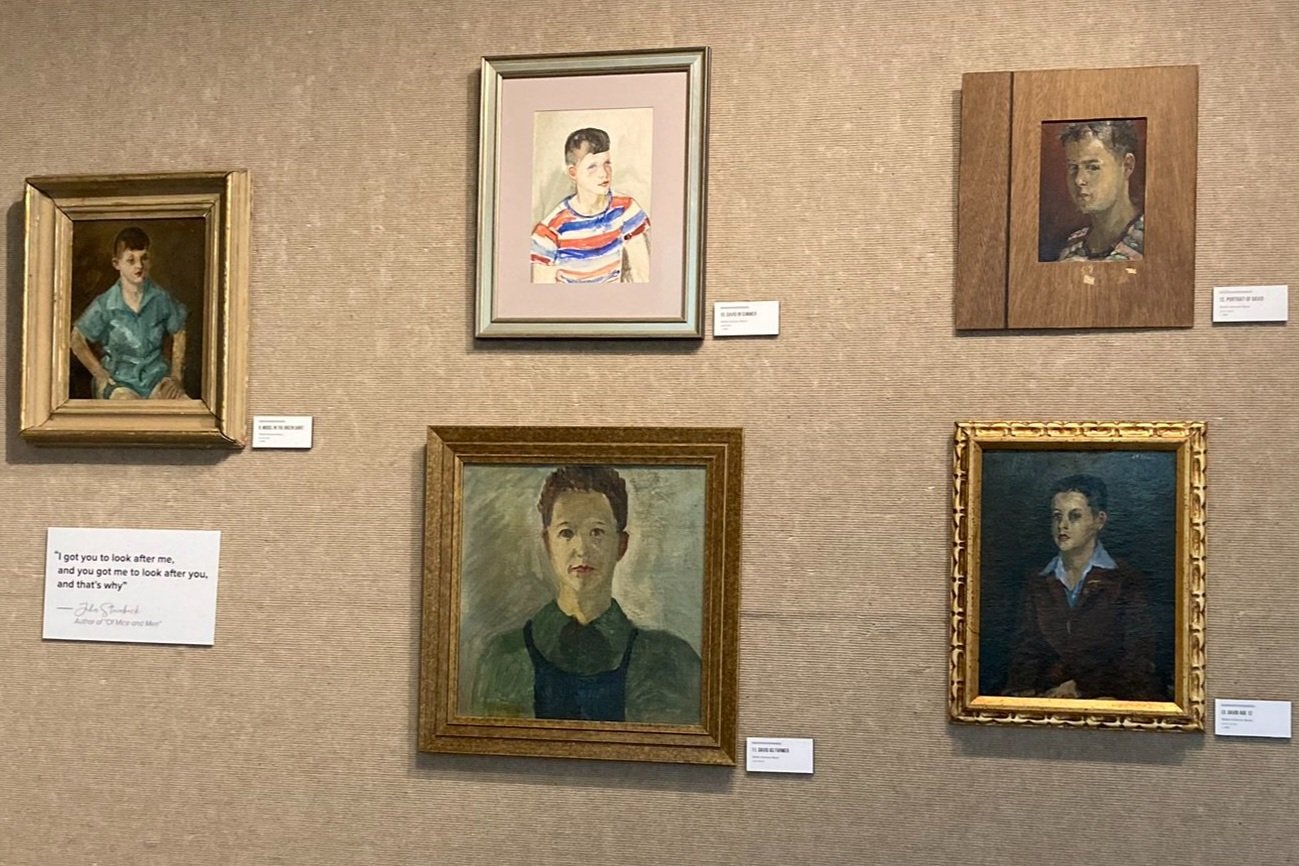David Emerson Baum
By Pamela Sergey
This Polio Survivor Inspired Love in his Grandfather’s Art.
Curator Holly Harter with Walter Emerson Baum’s unfinished portrait, “David, A Final Work” (1956); displayed on the artist’s easel. Photo Source: Ed Courrier
In 1976, when Andrew Wyeth was talking about his paintings of Anna Kuerner, he is quoted as saying "I think a person permeates a spot, and that lost presence makes the environment timeless to me. A lost presence keeps an area alive. It pulsates because of that."
The Baum School of Art exhibition Of Portraiture & Polio – A Tribute Exhibition In Memory of David Emerson Baum is a poignant and tangible expression of Wyeth’s quote. This exhibition showcases 16 portraits of David painted between 1937 and 1956 by his grandfather; famed landscape painter Walter Emerson Baum. Walter E. Baum died in the summer of 1956, and David passed in June 2021. Yet these portraits exemplify the affection, camaraderie and respect grandfather and grandson had for one another. These emotions embody the exhibition.
As Charlotte A. Moser, Co-Director of the Vaccine Education Center at the Children’s Hospital of Philadelphia, recently stated “As I visited the exhibit this morning, I was struck by the love between a grandfather and his grandson. This exhibit offers a great visual demonstration that while diseases, like polio, may shape someone’s life, they are not the sum total of that life.”
“David Baum Age 18” by Walter E. Baum.
Holly Harter, exhibition curator as well as David’s cousin and caregiver, explains “We were inspired by a portrait series painted by American artist Andrew Wyeth, known as The Helga Pictures. This series took the world by storm in 1987 and left an indelible impression on David.” David was further inspired in early 2021 by Bill Gates’ commitment with the Global Polio Eradication Initiative to eradicate polio.
Through this exhibition, David wished to share his special portrait collection with others in the hopes of raising awareness of polio and Post-polio syndrome (PPS).
David with his grandfather’s unfinished work.
David developed polio in 1935 at the age of 3. It affected the use of both his arms and legs. Harter explains that during his youth, “David was pushed to exercise and stretch his limbs (physical therapy in modern day terms) by his family. Eventually, he was able to ride a bike, attend school dances, help his dad build homes, and make frames for paintings.” In his portraits, Walter Baum focused on David’s demeanor and witty personality, not his disability. A sense of quiet mischievousness simmers just beneath the surface in many of the portraits, as if David was about to tell his grandfather a secret or make him laugh. Harter adds “The portrait of David with the flannel shirt was a special gift from Walter on David’s 18th birthday. It captures Walter’s profound respect and admiration for David as he matured into a man who ostensibly mastered living with the impact of polio. But it is the collection itself that paints a larger image of the universal relationship of grandfather and grandson.”
Included in the exhibition is the first public viewing of an unfinished portrait of David that Walter Baum was working on the eve of his death in 1956. It is displayed as it was in Walter Baum’s studio, on the easel of William T. Trego, Baum’s friend and mentor. Trego, a Victorian painter who specialized in battlefield scenes, had lived with disabling paralysis of his hands and feet since he was a toddler. From 1903 until Trego’s death in 1909, Baum studied with Trego while his wife, Flora, modelled for Trego. In 1904, when Walter Baum was nineteen, Trego painted his portrait, now in a private collection.
Baum painted a portrait of Trego during the same year, now in the collection of the Mercer Museum, Doylestown, PA.
Always an educator and arts advocate, Walter Baum founded the Baum School of Art in 1926 and prompted the creation of the Allentown (PA) Art Museum in 1934. In 1949, Walter Baum and Dr. Charles H. Boehm, Bucks County Superintendent of Schools, established the Bucks County Traveling Art Gallery to expose Bucks County (PA) children to local art.
David Baum continued his grandfather’s legacy by establishing the David Emerson Baum Memorial Scholarship Fund at the Baum School of Art to encourage art as a means of working through adversity and overcoming hardships.
REFERENCES
Conversation between Andrew Wyeth and Thomas P. F. Hoving, MET Director (1967-1977), The Metropolitan Museum of Art exhibition catalog, Two Worlds of Andrew Wyeth: Kuerners and Olsons, 1976
Photo Source: All photos, unless otherwise noted have been approved by Holly Harter









